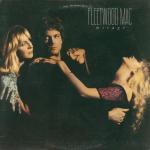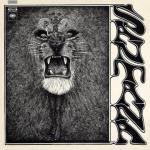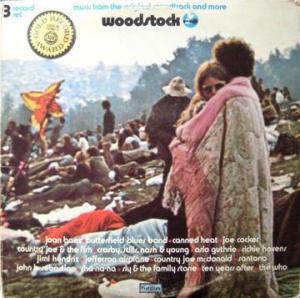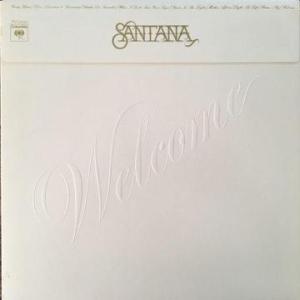
Hot Stamper Pressings of the Music of Santana Available Now
Reviews and Commentaries for the Music of Santana
Santana’s debut is yet another in the long list of recordings that really comes alive when you turn up your volume.
The commentary below refers to an experience I had playing the album in the late-90s.
This album needs to be played loud. I mean really loud. Years ago I used to demonstrate how important it was to have the level up good and high on the song Waiting.
Back in the mid-90s, I had somehow lucked into my first shockingly good Hot Stamper copy.
As a demonstration of what the Legacy Whisper system and its 8 fifteen inch woofer/midrange drivers could do, I would play the first minute or so of the track at a pretty good level. There’s lots of ambience, there’s a couple of guys who shout things out from way back in the studio, there’s a substantial amount of deep bass, and the whole recording has a natural smooth quality to it, which is precisely what allows you to play it at loud volumes.
Then I would turn it up a notch, say about 2-3 DB. I would announce to my friends that this is probably louder than you will ever play this record, but listen to what happens when you do. The soundstage gets wider and deeper, all those guys that shout can be heard more clearly, you start to really feel that deep bass, and when the song gets going, it really gets going. The energy of the music would jump to another level.
Then I would turn it up another 3 DB or so. At this point I would say that “this is how loud it should be played.” All the effects I mentioned earlier would become even more pronounced — wider, deeper, more clear, more powerful. The record was actually starting to sound like live music in my living room.
But of course, I was showing off a system that few could afford and that nobody in his right mind would put out in the middle of his living room. You would need a custom sound room, and a big one at that, to fit such a massive speaker and be able to turn it up.
But I was a bachelor at the time, and my live-in girlfriend at the time knew that she would have to go before the stereo did.
Unboosted
It was pointed out to me one day that the reason this record can be played loud is that, unlike most popular recordings, this album has a natural, unboosted top end, which means that the louder you play it, the more real it sounds. You can’t do that with most records. Many records have a top end that’s boosted to sound good at lower volumes. Not so with the first album by Santana. [For more records with the kind of vintage smooth sound we find so appealing, click here.]
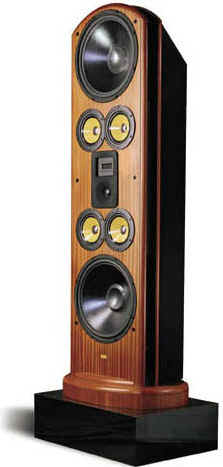 One of the reasons I [used to] have speakers with eight 15 inch woofers/ midrange drivers is that you need to be able to move a lot of air without distortion in order to play music at realistic listening levels. If you’ve got one or two 12 inch woofers and you try to play a record like this at loud listening levels, the distortion becomes unbearable as the drivers try to move all the air in your listening room and simply compress and distort in the attempt.
One of the reasons I [used to] have speakers with eight 15 inch woofers/ midrange drivers is that you need to be able to move a lot of air without distortion in order to play music at realistic listening levels. If you’ve got one or two 12 inch woofers and you try to play a record like this at loud listening levels, the distortion becomes unbearable as the drivers try to move all the air in your listening room and simply compress and distort in the attempt.
As Bill Dudleston, the designer of the Whisper speaker you see to the left, is famous for saying, paraphrasing of course, “It’s like trying to fan yourself on a hot day with a guitar pick. No matter how fast you wave the pick, it simply can’t move enough air to cool you off.”
The exact same principle applies to the reproduction of music at live listening levels. The drivers are not capable of the kind of motion that is required.
What this record has going for it is huge amounts of depth and a wide soundstage; an octave of bass below what would normally be considered bass (a 20 cycle note that sticks its head up from under the more common 40 cycle bass that drives the music); wonderful transparency and sweetness in the midrange; dynamics; and lastly, the kind of low-distortion, naturally un-hyped sound that this record shares with the Nirvana Nevermind LP that’s on the site.
[Correction: virtually never on the site. And the pressing we used to like happens to be one we no longer consider Hot Stamper worthy since almost any original domestic LP will beat it.]
When you turn up the volume on records like these, assuming you can turn up the volume to the levels we are talking about, you will hear something that approaches the sound of live music. Not many records allow you to do that, but this one does, if your stampers and your system are hot enough.
Obsessed Since 1969
Santana‘s debut is an album we freely admit to being obsessed with for a very long time. I had just turned 15 when this album came out in 1969 and I had never heard anything like it. Naturally, I went crazy for it and played it all the time on my godawful all-in-one stereo system through big-but-no-doubt-terrible-sounding Wharfedale speakers. (At least they had a 12″ woofer, which is more than you can say for a lot of audiophile speakers being made today, and for 100x the price.)
As should be clear from the commentary above, Santana’s debut deserves credit for helping me become a better listener.
- It’s a must own record.
- It’s a rock and pop masterpiece.
- And it’s a personal favorite.
The blog you are on now as well as our website are both devoted to very special records such as this.
 It is the very definition of a big speaker album. The better pressings have the kind of ENERGY in their grooves that are sure to leave most audiophile systems begging for mercy.
It is the very definition of a big speaker album. The better pressings have the kind of ENERGY in their grooves that are sure to leave most audiophile systems begging for mercy.
This is the audio challenge that awaits you. If you don’t have a system designed to play records with this kind of sonic power, don’t expect to hear them the way the band and those involved in their production wanted you to.
This album wants to rock your world, and that’s exactly what our Hot Stamper pressings are especially good at doing.
Naturally, the band’s debut is also part of our extensive listening in depth series. Any record we get obsessed with we tend to play hundreds and hundreds of times and make notes of what to listen for on specific tracks.
(more…)
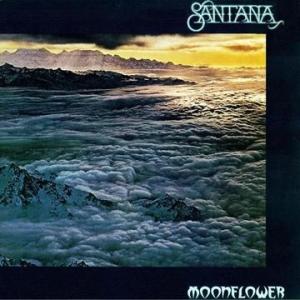

 One of the reasons I [used to] have speakers with eight 15 inch woofers/ midrange drivers is that you need to be able to move a lot of air without distortion in order to play music at realistic listening levels. If you’ve got one or two 12 inch woofers and you try to play a record like this at loud listening levels, the distortion becomes unbearable as the drivers try to move all the air in your listening room and simply compress and distort in the attempt.
One of the reasons I [used to] have speakers with eight 15 inch woofers/ midrange drivers is that you need to be able to move a lot of air without distortion in order to play music at realistic listening levels. If you’ve got one or two 12 inch woofers and you try to play a record like this at loud listening levels, the distortion becomes unbearable as the drivers try to move all the air in your listening room and simply compress and distort in the attempt. It is the very definition of a
It is the very definition of a 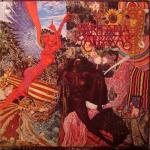
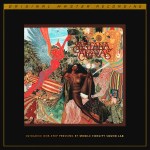 More of the Music of Santana
More of the Music of Santana
